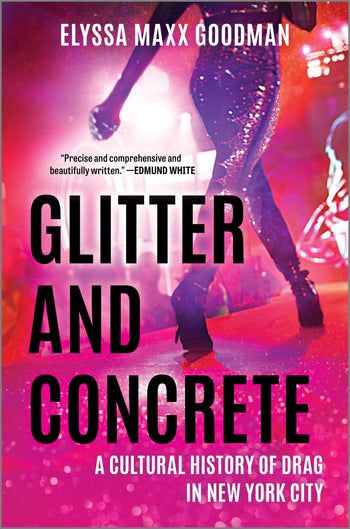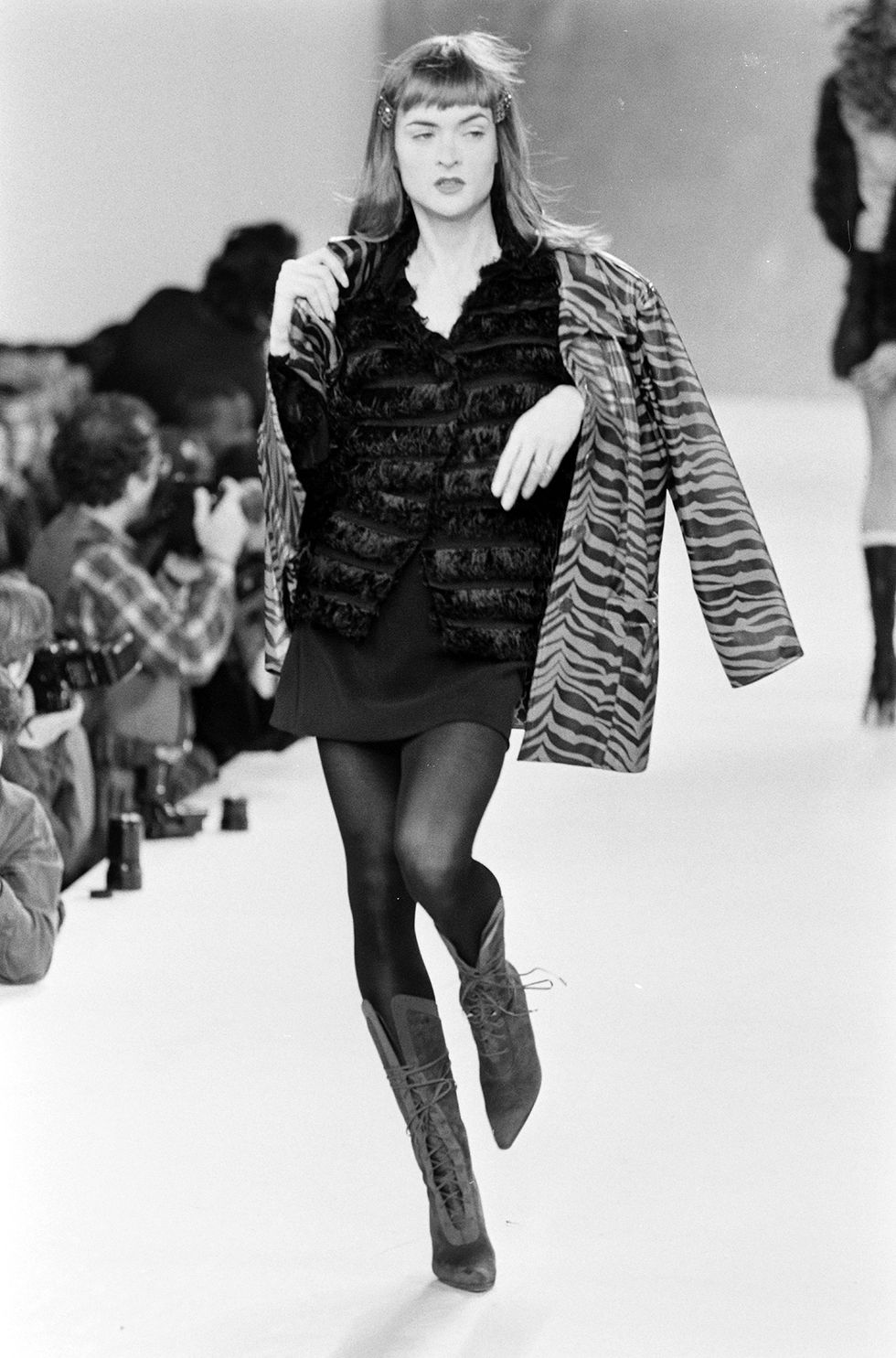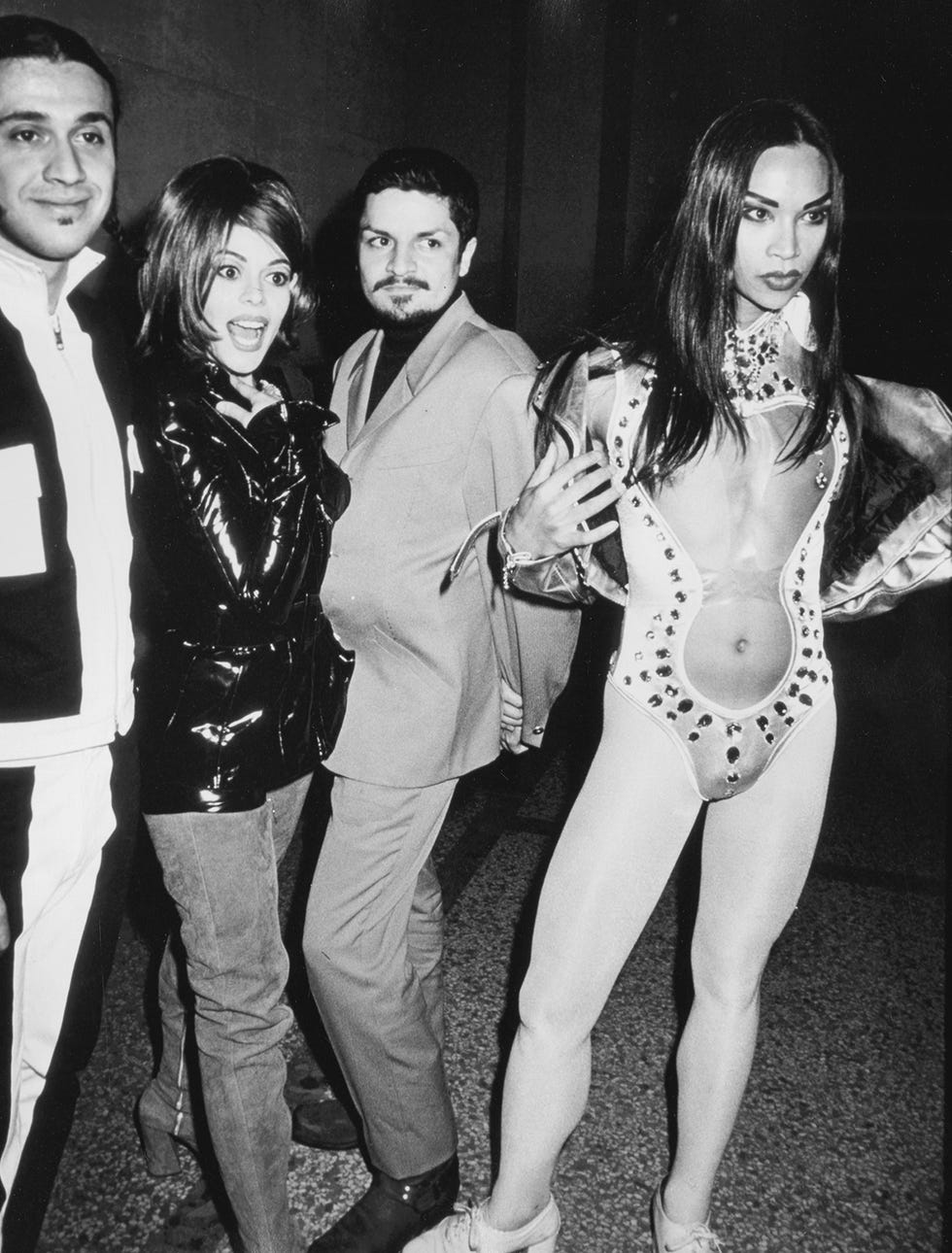Some of these models were in drag long before RuPaul. J. Alexander went to Studio 54 as a drag performer. He’d first take the Bx13 bus then the 6 train down from his grandmother’s Bronx apartment, then hop into a cab at 59th Street. “I wanted to look beautiful and glamorous like a couture model,” he wrote in his 2009 autobiography, Follow the model, but he didn’t want to be a drag queen. In 1984, Miss J booked a Jean Paul Gaultier fashion show. She was then signed by Elite Model Management Japan to a $20,000 contract. He was 16 when he began modeling in drag for many years. Later, he became a runway trainer for top designers and women who under his tutelage went on to become supermodels. Later, he became known as an acclaimed runway judge and coach on America’s Next Top Model.
Connie Fleming began transitioning in the late 1980s, and around that time walked the Runway Effect category at the House of Field’s Grand Street Ball. There, photographer Steven Meisel saw her and hired her for an Azzedine Alaïa book. She’d later appear on the runways of Thierry Mugler, Vivienne Westwood, and more in Paris and New York. “Me being on Mugler’s runway, that should have been the end of his business,” Fleming told Interview In 2020. “People thought no one would ever buy from him anymore. But his business did not go up in smoke.”
Fleming was already out of drag by the time drag hit the runway. She was still grouped with drag performers, despite her self-identification as trans. “It was the look of the moment,” she said. “But like Chrysis told me and taught me, the punches are going to come hard and fast and you are going to have to be able to withstand.” She was still booked and busy, a stunning force on the runway. Fleming’s demand for her services as a model decreased as drag models on the runway became less popular. She said that around 1995 it was time for her to leave. “The pendulum had swung,” she said. “Whether being put into the drag box or being trans, it was swept up into one pile and pushed out.” Returning to New York, however, she found a new career in runway production and coaching, as a tough door person at clubs in the city, and as an artist. She continued print modelling for Mugler. InterviewAustralian Vogue, CandyAlways legendary.
Billy Beyond modeled in the early 90s for Todd Oldham while he was working as a manager at the Pyramid Club. He had started modeling in the late 1980s when David LaChapelle photographed him in women’s clothes for a spread in Interview. “Everybody saw it, and that was it. ‘Who’s the new model?’ And I started getting other modeling jobs in drag,” Beyond said. “Once you’re in it, you can’t Take it off. Sorry. I’m sorry, you’re not allowed… And beyond that, you will always be a drag queen. It is not necessary to be able to speak. Whether you like it or not,” he said.
Todd Oldham loved the precision of Billy’s look, he said, and thought he had a great walk. “When you’re doing a show or casting anything, or taking a photograph, it’s all just about what and who can deliver in these moments, how is the best way to create this. So there was never really like, ‘let’s put a man on the runway in clothing.’ That never ever, ever crossed my mind,” Oldham said. “There was just something about him, especially in that moment, sort of looking back and looking forward all at the same time. “He really just seemed like he captured it all for us and made our work look so much nicer.” Like he could really sell it, so to speak.”
Billy first appeared in 1990 on Todd Oldham’s runways. It was one of fashion’s hottest events. Supermodels like Linda Evangelista were there, as well as Carla Bruni and Naomi Campbell. While he was known as “the drag model,” like Fleming he was really just…a good model. That’s all he wanted to be. Beyond quit modeling in 1997. He didn’t want to be pigeonholed, and he wanted to explore his creative side.
Zaldy entered the Miss BoyBar Competition at the BoyBar in the 1980s. [drag artist] Perfidia’s behest and promptly won. But he relinquished his crown and didn’t get in drag again for several more years. Mathu Andersen, his partner for ten years and an artist, started photographing him with makeup. Susanne convinced Mathu a 6’2″ white Australian man and Zaldy who is 5’9″ Asian to attend her parties dressed as twins. Zaldy laughs even today at this idea. They rethought drag for themselves, skipping chest pieces, accentuating small waists and padded hips, envisioning an edgy “alien fashion drag,” Zaldy says. Zaldy also met RuPaul in the late 80s at the club La Palace de Beaute. Zaldy and Mathu soon became the performer’s de facto costume and makeup team (they appear in RuPaul’s 1993 “Supermodel” video doing this).
In 1995, after turns on the runways of Paris, Zaldy starred in a commercial for Levi’s. He’s a shapely figure in jeans, long dark hair, and red lips who gets into the back of a taxicab, much to the delight of the driver. Zaldy then grabs an electric razor to shave his beard. “I couldn’t grow facial hair back then… And so they had to clip my hair and glue hair to my chin so I had something to shave,” he laughed. At his destination, Zaldy gets out and walks into a cloud of smoke coming from under a New York bridge, and the words “Cut for men since 1850” appear on the screen. The commercial was promptly banned in the U.S. “I’m American. I was born in America, and you’re saying this is too much for you?” Zaldy said. “Give me a break! It’s Levi’s! Levi’s is from America.” Not long after, Zaldy reimagined his design career, which was always his first love. He has maintained a regular working relationship with RuPaul for some thirty years—he designs all the performers’ costumes—and also designed for the likes of Lady Gaga, Britney Spears, Michael Jackson, and countless others in that time.
The issue of Zaldy and Levi’s is an interesting one as it relates to the placement of drag in American culture. Even though there was a lot of discussion about a drag boom both in and outside of New York at the time, it was still considered a fringe art form. Drag was not considered a respectable art form in New York, nor amongst the gay community. Zaldy remembers in the late 1980s there were still bars that didn’t allow drag queens at all. “There was a stigma to saying ‘I’m going to become a drag queen,’” he said. “It’s like ‘ugh, nothing else is going for you? You wanna focus on a ?’… It wasn’t a career choice…now it’s a career choice.”
Excerpted by Elyssa Goodman from Glitter and Concrete. Copyright © 2023 by Elyssa Maxx Goodman. Published in accordance with Harlequin Books S.A.


